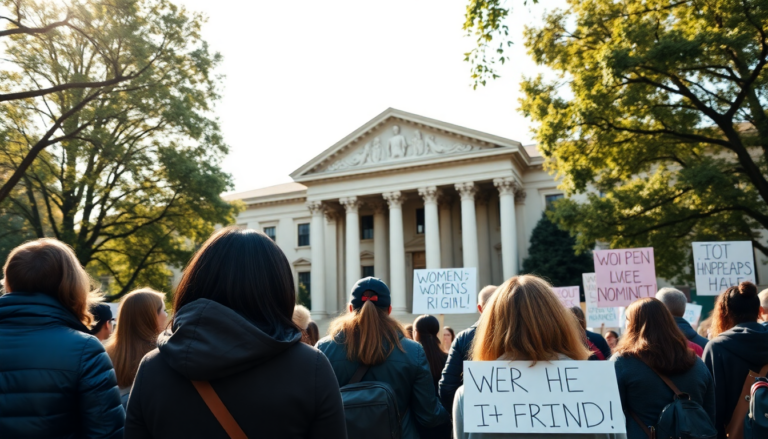Argomenti trattati
The ongoing legal saga between Blake Lively and Justin Baldoni has taken a dramatic turn, with increasing public interest and involvement from women’s rights organizations. This high-profile case, which has garnered extensive media coverage, highlights the complexities surrounding allegations of sexual harassment, creative control, and the dynamics of power in the entertainment industry. As Lively pushes back against Baldoni’s claims, the narrative continues to evolve, raising questions about accountability and the treatment of women in Hollywood.
A growing coalition of support for Lively
Recently, fourteen women’s rights organizations have banded together to co-sign an amicus curiae brief in support of Lively’s claims against Baldoni. This brings the total number of organizations backing her to nineteen, showcasing a significant shift in public perception regarding the treatment of women in the film industry. Among the signatories are prominent groups like the National Organization for Women and the Coalition Against Trafficking in Women. These organizations accuse Baldoni of employing the “DARVO” tactic—deny, attack, and reverse victim and offender—aimed at discrediting Lively and silencing her allegations.
Lively’s legal team has characterized Baldoni’s behavior as a stark contradiction to his previously established feminist persona. The actress’s lawyers argue that Baldoni’s attempts to challenge the amicus briefs reveal a desperate effort to undermine her credibility, positioning the conflict not just as a personal dispute but as a broader commentary on women’s rights and the #MeToo movement.
The legal wranglings unfold
As the case progresses, Baldoni’s legal team has made several motions, including a request to dismiss the amicus briefs filed by women’s groups, which they argue are irrelevant to Lively’s motion to dismiss his lawsuit. They assert that these briefs are merely a platform for Lively to continue her public attack against Baldoni. However, Lively’s representatives have dismissed this characterization, asserting that their focus is on ensuring that women’s voices are heard in the legal process.
In a recent court filing, Baldoni’s lawyers claimed that Lively has expressed a desire to withdraw her emotional distress claim. This move has raised eyebrows, especially as his team contends that such a withdrawal is tied to their request for her to provide medical records to substantiate her claims. Lively’s team has shot back, calling the legal maneuvers a publicity stunt, indicating the tension is palpable as both sides navigate the complexities of their intertwined legal battles.
Behind the scenes of the film set
Reports from those who worked on the set of “It Ends With Us” suggest a tense atmosphere during filming. Thomas Canestraro, a stunt double for Baldoni, described the environment as “tense” and noted that Lively appeared more reserved than he remembered from their previous collaboration. This description raises questions about the interpersonal dynamics on set and how they may have contributed to the current legal conflict.
As the legal disputes escalated, the fallout has affected Lively’s promotional efforts for her recent projects. In interviews, Lively has discussed the emotional toll this past year has taken on her, stating she feels fortunate to share her story amid a culture that often silences women’s experiences. Her recent film, “Another Simple Favor,” received a warm reception, but the backdrop of her ongoing legal battle looms large.
The media frenzy and public reaction
The media has been rife with commentary surrounding the unfolding drama, with celebrities and public figures weighing in. Some have expressed support for Lively, while others have criticized both parties for the spectacle their legal battle has created. Amid the chaos, the story has captured the attention of audiences, fueling discussions about the treatment of women in Hollywood and the implications of their legal battles.
As Lively prepares to take the stand during her trial, the entertainment world watches closely. Her experiences resonate with many who advocate for women’s rights and seek to challenge systemic issues within industries where power dynamics often silence victims. The outcome of this case could have far-reaching implications, not just for those involved, but for the industry as a whole.
Future implications of the case
Looking ahead, the stakes are high. The trial is set to commence in March 2026, and both sides are preparing for a drawn-out legal battle that could redefine the parameters of accountability within the entertainment industry. As the legal discourse unfolds, it will be crucial to observe whether this case will set a precedent for how allegations of harassment and retaliation are handled in Hollywood.
Whether Lively’s fight will lead to significant change remains to be seen. However, the collective support from organizations advocating for women’s rights is a powerful reminder that the voices of victims are increasingly hard to silence. The landscape of Hollywood is shifting, and this case may just be a pivotal moment in that evolution, sparking further conversations about gender dynamics, creative control, and the rights of individuals within the industry.

